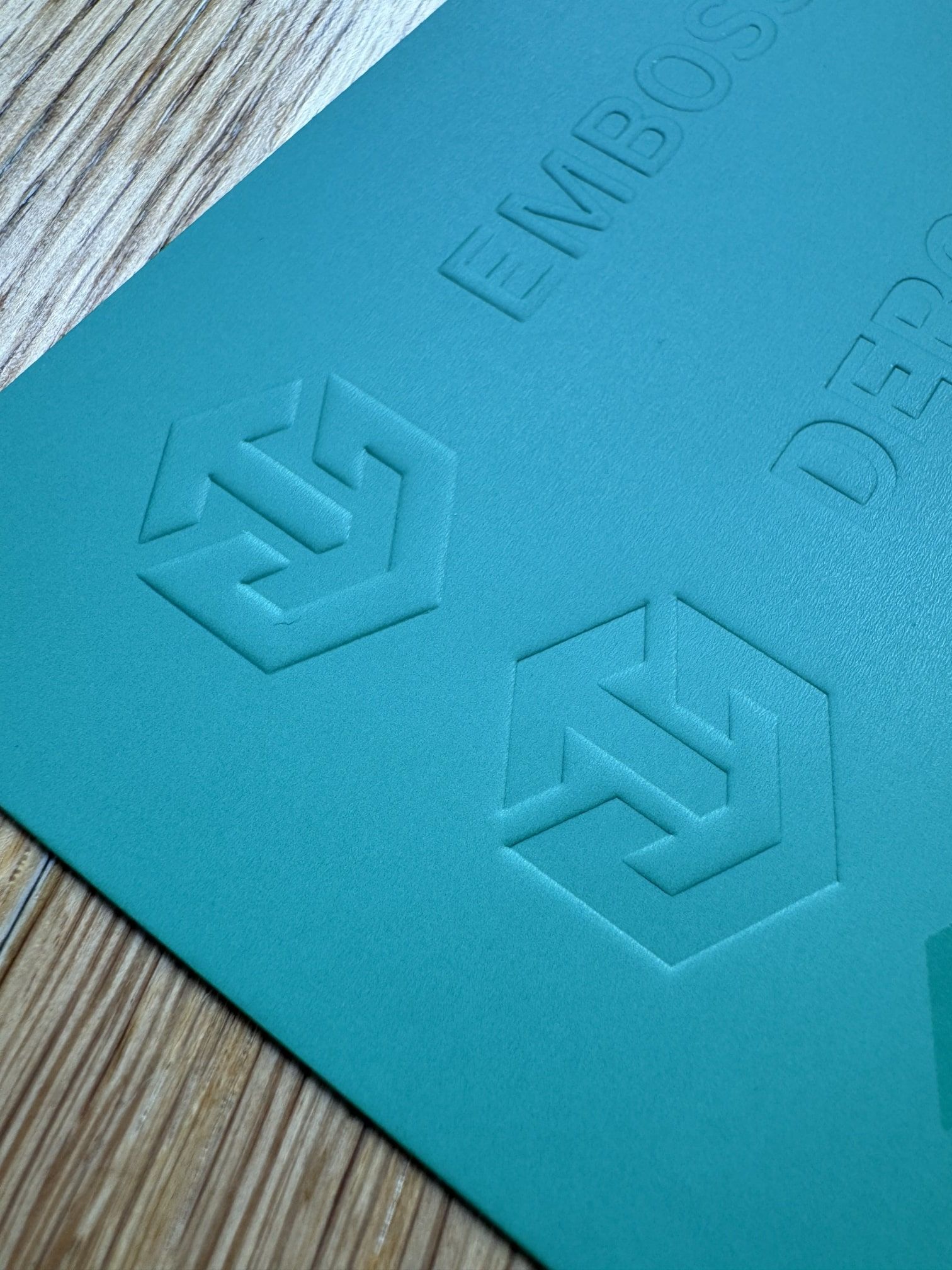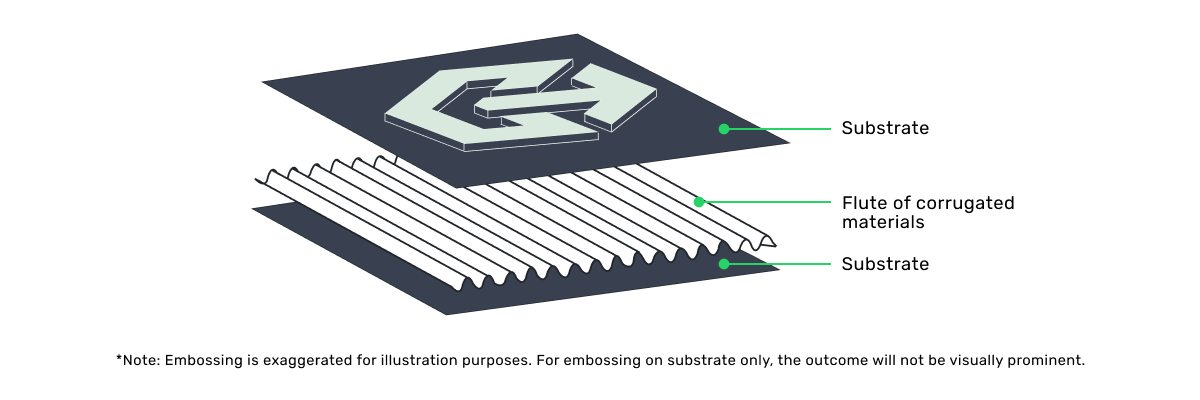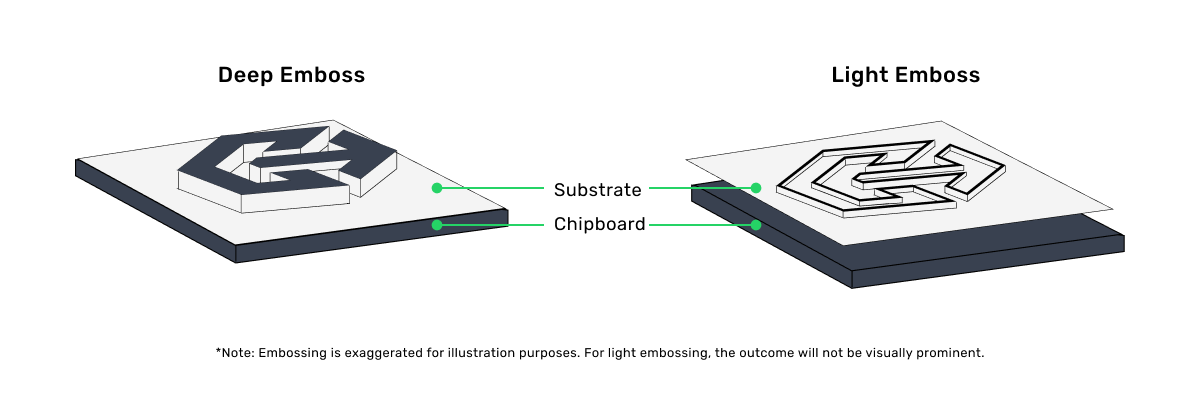Misalignment with embossing
It's normal for there to be a slight margin of error when packaging is printed or produced, irrespective of embossing. However, one of the biggest challenges for embossing (or debossing) a printed design is aligning the embossing tool and the printed artwork. Given this, the larger the embossed area, the easier it is to align and the less obvious any misalignment becomes. However, if finer details are misaligned (e.g., thin text), a misaligned letter would mean the rest of the text would be misaligned.
Block emboss
One way to handle misalignment issues would be through block embossing. Block embossing is embossing a simple shape around more detailed artwork. For example, you might emboss the large square behind your logo and not emboss the logo itself.
Blind emboss
Another way to minimize any misalignment issues would be to blind emboss. Blind embossing is embossing just the material itself without having any printed artwork. Because there's no artwork, then there's no misalignment to the artwork.



